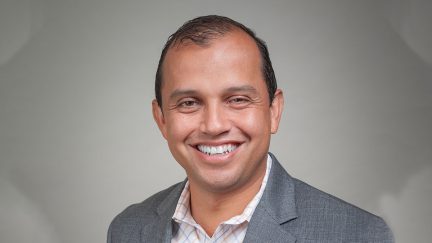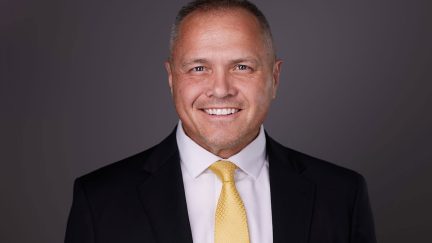For more stories like this, sign up for the PLANADVISERdash daily newsletter.
Retirement Industry People Moves
Insight Investment names portfolio strategist; Ascensus adds RVP to cover northern Texas region; QMA announces chief business officer; and more.
Insight Investment Names Portfolio Strategist
Insight Investment announced that Louis D’Anella has joined the firm as senior portfolio strategist. D’Anella will focus on supporting the sales efforts of Insight’s distribution partners in the intermediary market.
Svein Floden, head of Intermediary Distribution at Insight says, “Providing product specialist support to our distribution partners is key to developing our intermediary franchise in the U.S., including our actively managed multi-sector Core Plus bond strategy. Louis’ breadth and depth of experience will be invaluable as we continue to grow our engagement with intermediary platforms and financial advisers.”
D’Anella joins Insight Investment from Alliance Bernstein where he most recently served as a senior fixed income investment strategist supporting the firm’s global multi-sector and core fixed income strategies. He began his career as a member of Merrill Lynch’s home office due diligence team covering fixed income investments.
D’Anella will be based in New York and report to Floden.
Ascensus Adds RVP to Cover Northern Texas Region
Ascensus has appointed Bryan Bracchi as regional vice president of the firm’s retirement plan sales team for the Northern Texas region, covering North Texas and Oklahoma.
In this role, Bracchi will work with financial advisers, third-party administrators (TPAs), and financial institutions—including institutional partners and DCIO (defined contribution investment only) sales representatives—to build and maintain Ascensus’ retirement plan distribution networks. He will report directly to Chad Brown, divisional vice president of the western region, retirement sales at Ascensus.
Bracchi brings nearly 20 years of retirement industry experience to his role. Prior to joining Ascensus, he served as vice president, senior retirement plan strategist at Franklin Templeton Investments and vice president, retirement plan consultant at Oppenheimer Funds. Bracchi earned his bachelor’s degree in business—human resource management from Auburn University and holds his FINRA Series 7, 63, and 66 licenses along with his Accredited Investment Fiduciary and Certified Health Savings Adviser designations.
“Bryan’s deep industry knowledge and excellent communication skills allow him to establish a rapport with clients that helps him to accurately assess—and ultimately meet—their needs,” states Jason Crane, head of retirement sales at Ascensus. “We’re looking forward to watching him apply his professional and interpersonal skills to building and maintaining adviser relationships in the Northern Texas region.”
QMA Announces Chief Business Officer
QMA has named Linda Gibson to the newly created role of chief business officer, the latest step in the firm’s continued global expansion. QMA is the quantitative equity and global multi-asset specialist of PGIM, the $1.2 trillion global investment management business of Prudential Financial, Inc.
Gibson will work closely with QMA’s chairman and CEO, Andrew Dyson, to advance QMA’s strategy including the provision of customized global solutions across the risk-return spectrum to clients, while leveraging the full scale of PGIM. Gibson will be based out of QMA’s headquarters in Newark, New Jersey, and oversee finance, business planning and management, competitive intelligence, project management, human resources (HR), operational risk and cross-functional initiatives.
“Linda brings a wealth of knowledge to QMA with her nearly 30 years of experience across all aspects of operating a large global company in the asset management industry,” says Dyson. “Her hire is proof that QMA’s innovative, client-focused culture continues to attract top-notch talent to complement our existing management team.”
“I’m thrilled to join QMA at such a pivotal time for the firm,” says Gibson. “I’m looking forward to working with the team to drive the strategy to the next level as we solidify QMA as a leading global player across the full range of quantitative strategies.”
Gibson joins QMA with nearly 30 years of investment management and financial services business experience, including 18 years at BrightSphere Investment Group, a public multi-boutique asset manager. Her roles there spanned a wide range of front and back office executive functions, including management of legal, compliance, operations, global business development and human resources. As part of Old Mutual’s executive team, Gibson led several high-profile initiatives such as transforming affiliates through product development, product line extension and lift-outs; creating a global, centralized distribution team; and developing strategy to take the company public.
Gibson has a variety of board experience, including serving at the chairman and board level for investment firms, trust vehicles and UCITS Funds within Old Mutual. She has also held several officer-level positions on multiple mutual funds. Gibson holds a law degree from Boston University School of Law and a bachelor’s degree in mathematics from Bates College.
Nationwide Appoints Leaders to Financial Services Business
John Carter has been named as the president and chief operating officer-elect of Nationwide’s financial services business lines, effective immediately. Carter succeeds Kirt Walker, who will become Nationwide’s next chief executive officer in October. Reporting to Walker, Carter will oversee the company’s retirement plans, life insurance (individual, business and corporate-owned), annuities and mutual funds business operations.
“John brings more than 30 years of financial services industry experience to this role,” says Walker. “Throughout his career, he has demonstrated outstanding leadership, both in terms of results and people. John is a strong advocate for the retirement security of America’s workers—helping them prepare for and live in retirement. We look forward to achieving continued success under his guidance.”
Carter joined Nationwide Financial in 2005 as president of the Nationwide Financial Sales and Distribution organization, responsible for leading sales of private-sector retirement plans, life insurance, annuities and mutual funds. In 2013, he was named president of Nationwide’s retirement plans business.
Prior to joining Nationwide, he held executive positions in financial services at Prudential Financial, UBS and the former Kidder Peabody.
“Nationwide benefits from a strong bench of executive leaders,” says retiring CEO Steve Rasmussen. “Kirt and John will work together to facilitate a smooth transition and maintain the strong growth momentum we’ve built over the past several years. We look forward to achieving continued success under John’s leadership, building on Nationwide’s mutual heritage, financial strength and culture of caring.”
Carter is a graduate of the University of Missouri where he earned a bachelor’s degree in business administration and finance.
Former Financial Services CEO Joins Custodia’s Advisory Council
Custodia Financial has appointed Roger Ochs, previous CEO of HD Vest, to its Strategic Advisory Council (SAC). In his role on the SAC, Ochs will provide guidance and subject matter expertise on corporate matters, capital markets, and corporate governance.
In addition to serving on the SAC, Roger is a member of the board of eSecLending, a provider of securities financing, collateral and liquidity services; chairman of the Board for Door, Inc., a residential real estate brokerage firm; a member of Parthenon Capital’s Industry Advisor Council; and a member of Securities Industry Financial Markets Association’s (SIFMA) Advisors Council. He is also a member of the Texas and Dallas bar associations.
“Roger brings a unique perspective to our Strategic Advisory Council,” says Tod Ruble, CEO of Custodia Financial. “First, he’s a true entrepreneur. His experiences growing HD Vest from a smaller firm into a nationally-recognized, technology-driven organization couldn’t be more relevant to Custodia. In addition, he knows the accounting and audit world, and an important benefit of [Retirement Loan Eraser] RLE is mitigating audit risk.”
“Loan defaults represent not just a retirement security and plan fiduciary problem, but also a significant audit risk, particularly given recent IRS changes to plan sponsor reporting. I see Retirement Loan Eraser as a win-win for employees and the companies they work for,” says Ochs.
You Might Also Like:

2025 Top Retirement Plan Adviser: Alvaro Galvis

2025 Top Retirement Plan Adviser: Erik Daley

2025 Top Retirement Plan Adviser: Bill Sobers
« EBRI Projects Effect of Retirement Proposals on Retirement Income Adequacy
